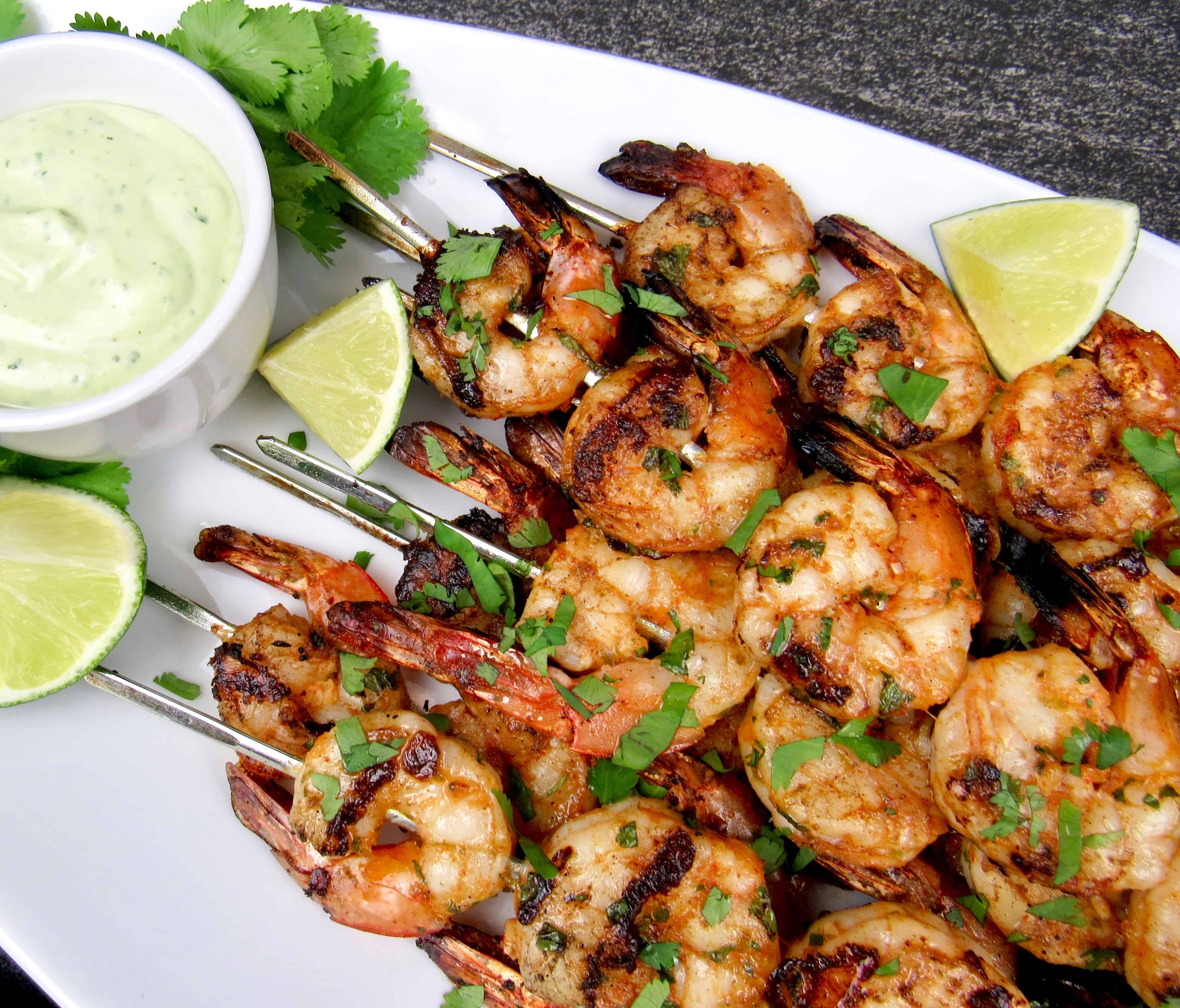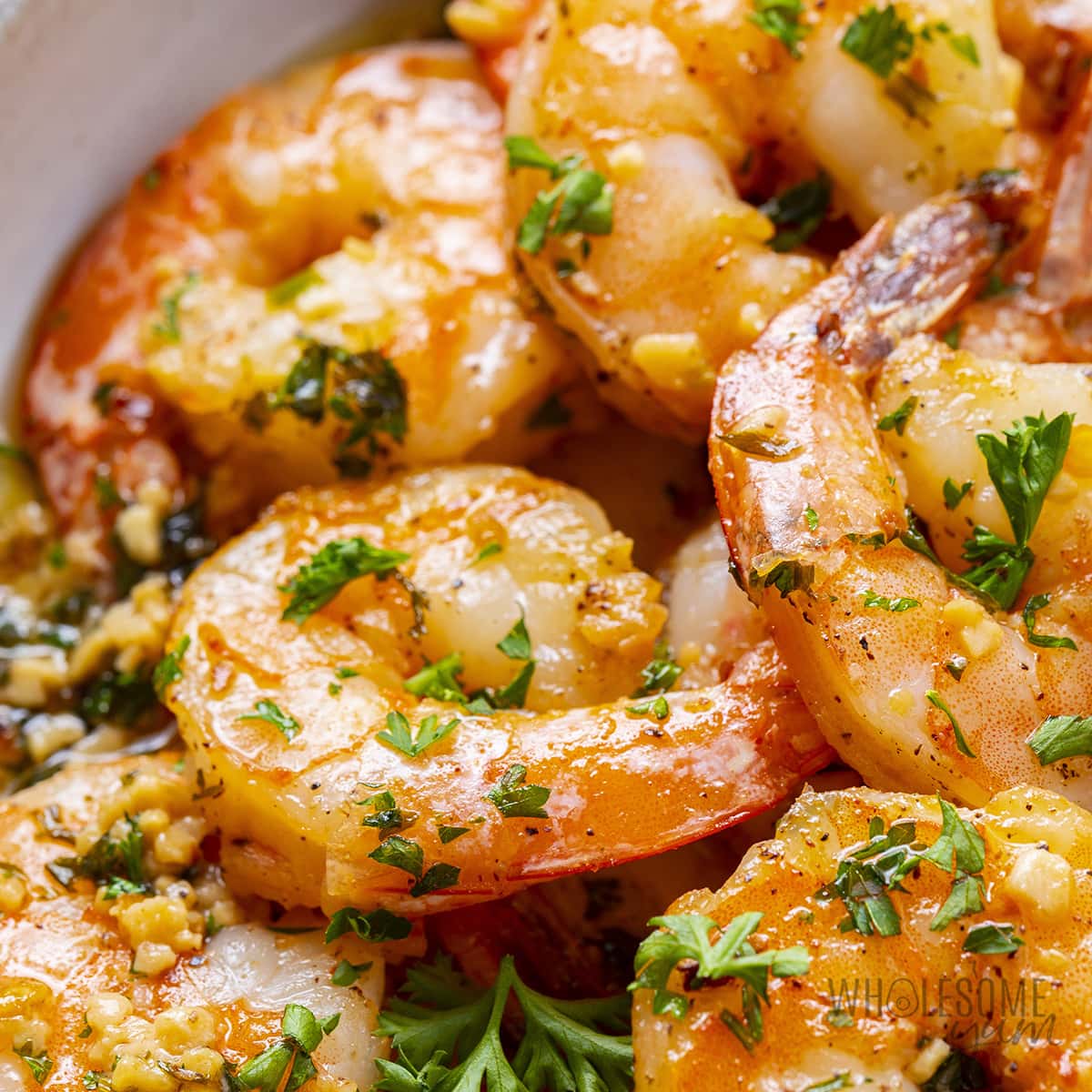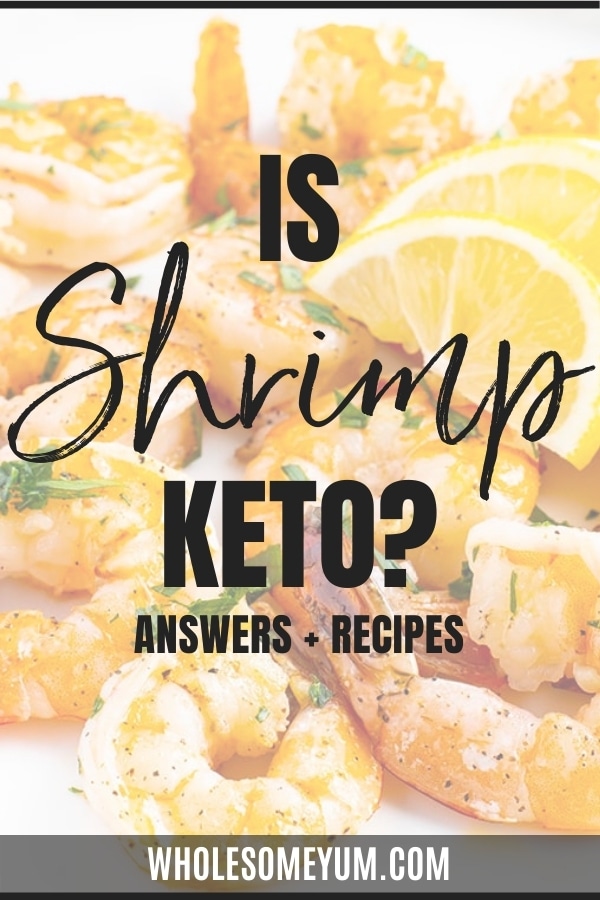Are shrimp keto? How many carbs are in shrimp? Find out here, along with keto shrimp recipes that fit your macros. By.
The keto diet has become one of the most popular diets for weight loss and overall health in recent years. This very low-carb high-fat diet puts your body into a metabolic state called ketosis which has been shown to have many benefits. However, when starting a new diet, one of the first questions is always “What can I eat?”
Seafood is a keto-friendly food group. But can you eat shrimp specifically while following a keto diet? The short answer is yes, shrimp can definitely be part of a keto diet. Not only are shrimp keto-friendly, but they also offer some great health benefits.
In this article, we’ll take a closer look at shrimp and the keto diet, including:
- Are shrimp keto-friendly?
- Nutrition facts and health benefits of shrimp
- How much shrimp you can eat per day on keto
- The best ways to cook shrimp on the keto diet
- Potential downsides of eating shrimp
We’ll also answer some common questions about shrimp and the keto diet so you can determine if shrimp should be part of your keto meal plan.
Are Shrimp Keto-Friendly?
Shrimp are a great keto-friendly food. A 3-ounce serving of shrimp contains:
- Calories: 84
- Fat: 1g
- Carbs: 0g
- Protein: 18g
With zero carbs, shrimp fit perfectly into a keto diet. And with 18g of protein per serving, shrimp can help you meet your daily protein goals on keto.
In addition to being low-carb, shrimp offer a number of important vitamins and minerals:
- Selenium: 78% of the RDI
- Vitamin B12: 78% of the RDI
- Phosphorus: 36% of the RDI
- Zinc: 23% of the RDI
- Copper: 21% of the RDI
Shrimp contain several unique antioxidants as well, such as astaxanthin, that can reduce inflammation and oxidation in the body.
So not only are shrimp keto-friendly, but they also provide important nutrients that can benefit your health in numerous ways.
Nutrition Facts and Health Benefits of Shrimp
Let’s take a more in-depth look at the impressive nutrition profile of shrimp.
Protein
With 18g of protein per 3-ounce serving, shrimp provide over half of the recommended daily intake of protein. Protein plays vital roles in the body including building and repairing tissues and muscle, supporting the immune system, and helping regulate hormones.
Getting enough protein is crucial on the keto diet. Shrimp provide high-quality, easy-to-absorb protein that can help you meet your daily protein goals.
Vitamin B12
Shrimp are one of the richest dietary sources of vitamin B12 available. Per serving, shrimp provide 78% of the recommended daily value.
Vitamin B12 plays a vital role in red blood cell formation, neurological function, DNA synthesis, and more. It’s also important for energy levels.
Selenium
Shrimp also contain high levels of the mineral selenium. Selenium acts as an antioxidant and is needed for thyroid hormone metabolism and DNA production. It has been linked to reduced inflammation and protection against chronic diseases like cancer and heart disease.
Astaxanthin
This antioxidant carotenoid is what gives shrimp their reddish-pink color. It has strong anti-inflammatory effects and has been linked to lower rates of certain cancers. Astaxanthin can also improve muscle endurance and recovery.
Other Nutrients
Shrimp also contain copper, zinc, phosphorus, iodine, and vitamin D.
Together, the wide array of vitamins, minerals, and antioxidants make shrimp a very nutritious food that can benefit several aspects of health.
How Much Shrimp Can You Eat on Keto?
One of the great things about shrimp is that they are low in calories while being high in nutrients.
A serving of shrimp is about 3 ounces or around 5 medium shrimp. This contains only 84 calories and 0 carbs.
Most keto experts recommend limiting protein intake to 0.8-1.2 grams of protein per pound of lean body mass.
So if your goal is 100g of protein per day, you could eat around 17-20 medium shrimp to get 20g of protein.
Of course, this amount can vary based on your own protein needs. The key is moderating your shrimp intake and building your keto diet around a variety of protein sources like fish, poultry, eggs, and meat.
As long as you are staying under your daily carb limit, feel free to incorporate shrimp into your keto meal plan. They make a nutritious addition to keto salads, stir-fries, soups, and more.
Best Ways to Cook Shrimp on Keto
One of the great things about shrimp is that they are versatile and quick to cook. Here are some of the best cooking methods for shrimp on the keto diet:
-
Grilled shrimp – Toss shrimp in olive oil, garlic, and lemon juice then grill until pink and plump. Delicious over a keto salad.
-
Shrimp scampi – Saute shrimp in butter, garlic, lemon, and parsley for a fast and flavorful dish. Serve over zucchini noodles.
-
Coconut shrimp – For a crispy, flavorful treat, roll shrimp in an egg wash and shredded coconut then bake or air fry.
-
Shrimp soup – Simmer shrimp in bone or vegetable broth with keto veggies like mushrooms, zucchini, and greens.
-
Shrimp stir fry – Quickly stir fry shrimp with riced cauliflower or shirataki noodles and keto-friendly veggies in coconut aminos and sesame oil.
-
Cajun shrimp – Blacken seasoned shrimp in a hot skillet for a quick Cajun seafood dish.
Shrimp require minimal cooking so they are perfect for easy keto meals. Just avoid breaded coconut shrimp or dishes made with high-carb sauces or batters.
Potential Downsides of Eating Shrimp
While shrimp can be a healthy addition to a keto diet for most people, there are a few potential downsides to consider:
-
Allergies – Shellfish allergies are common, especially to shrimp. Discontinue eating if any food allergy symptoms develop.
-
High cholesterol – Shrimp are high in dietary cholesterol with 171mg per serving. Those with high cholesterol may want to limit intake.
-
Heavy metal exposure – Shrimp can contain traces of heavy metals due to water pollution. Eat a variety of seafood and limit intake of exclusively shrimp.
-
Sustainability issues – Some shrimp farms contribute to ocean pollution and habitat destruction. Opt for wild-caught or sustainably raised shrimp when possible.
As long as you tolerate shellfish well and avoid eating extremely high amounts, shrimp can be a regular part of a healthy keto diet when sourced responsibly. Those with shellfish allergies or pre-existing high cholesterol should exercise more caution with shrimp.
Frequently Asked Questions About Shrimp and the Keto Diet
Here are answers to some of the most common questions about eating shrimp on the keto diet:
Can you eat shrimp raw on keto?
Most raw shrimp sold commercially are previously frozen, which kills any parasites. However, there is still a risk of bacterial contamination with raw shrimp. Cooking shrimp thoroughly is the safest choice.
Are shrimp high in mercury?
Shrimp have very low mercury levels compared to larger fish like tuna. Eating 8-12 ounces of shrimp per week is considered safe for most people.
Are frozen shrimp keto-friendly?
Yes, frozen shrimp are fine for keto as long as they don’t have added sauces or coatings. Make sure to read labels.
Can you eat shrimp tails?
Shrimp tails are edible, though some people prefer to remove them before eating. It’s a personal choice whether to eat the tails or not.
Do shrimp make you gain weight on keto?
Shrimp are unlikely to lead to weight gain by themselves. However, breading and frying shrimp adds calories. Enjoy shrimp as part of your keto macros for best results.
The Bottom Line
Shrimp are a keto superfood – they are low in carbs, high in protein, and contain many beneficial vitamins and minerals.
Aim for 3-5 ounces of shrimp two to three times per week as part of a healthy keto diet. Grill, bake, saute, or stir fry shrimp for best results.
While most people can eat moderate amounts of shrimp safely, limit intake if you have high cholesterol levels or a shellfish allergy.
Enjoy shrimp as part of a diverse, whole food keto diet for the best impact on your health and waistline

Thai Shrimp Lettuce Wraps
Have you tried shrimp like this before? This low-carb version of Thai food is made with marinated shrimp, peanut sauce, and a fresh lettuce wrap.

FREE PRINTABLE: LOW CARB & KETO FOOD LIST

